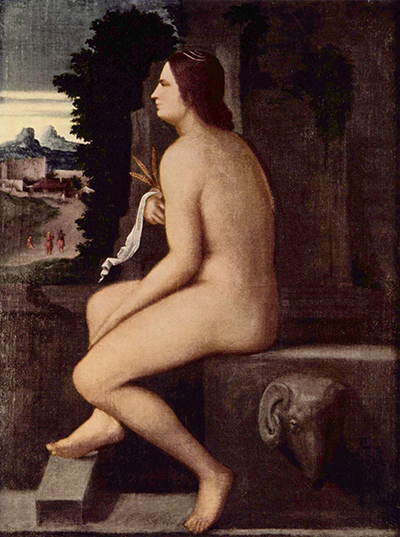 Buy Art Prints Now
Buy Art Prints Nowfrom Amazon
* As an Amazon Associate, and partner with Google Adsense and Ezoic, I earn from qualifying purchases.
The Venetian painter, Giorgione, was an artist known for the poetic quality of his works. He was an outstanding figure of the Venice art school during the time of the High Renaissance art movement. Although he did not paint many works during his short career, one of the works credited to Giorgione is the painting, Ceres.
In 1510, Giorgione painted the picture of the Roman Goddess, Ceres. There are only a small number of works proven as being by the artist. The artwork Ceres is not one of them. Despite this, many acknowledge Giorgione as the painter. The painting measures 75cm x 55cm and is an oil on canvass painting. The majority of Giorgione’s works were the result of private commissions. There is, however, little information available about who commissioned the painting of Ceres. Today, the picture of Ceres is on display at the Gemäldegalerie in Berlin.
Looking at the painting, Giorgione has shown the goddess, Ceres, as a seated nude figure. She is sitting on a stone slab that has a carved Ram’s head on the side. The building is an old temple like stone structure. In her right hand, Ceres is holding three wheat stems and a strip of white cloth. The wheat stems are a link to the fact that she is, in Roman mythology, the goddess of agriculture. Supporting this is her connection with bringing agriculture and things connected with it to humankind. In the painting, the seated figure of Ceres is looking to the left through an open window. A large tree fills one side of the window. Alongside it, there is a road leading up to a stone building. In the distance, there are two towering mountains, topped by a grey cloudy sky.
With little information available about the artist, interpretation of Giorgione’s works by others has been much harder. Interpreting his pictures has been the topic of several studies. The style of Giorgione’s paintings is unlike other Renaissance paintings. A key feature of his style was his use of expressive imagery as well as using a small format for paintings of the era. His use of shades of colour allows him to depict light and perspective in his works. In spite of his short career, Giorgione was an influence on artists like Titian as well as 17th-century artists. With several of Giorgione’s works unfinished when he died in 1510, it was painters like Titian who completed them.




